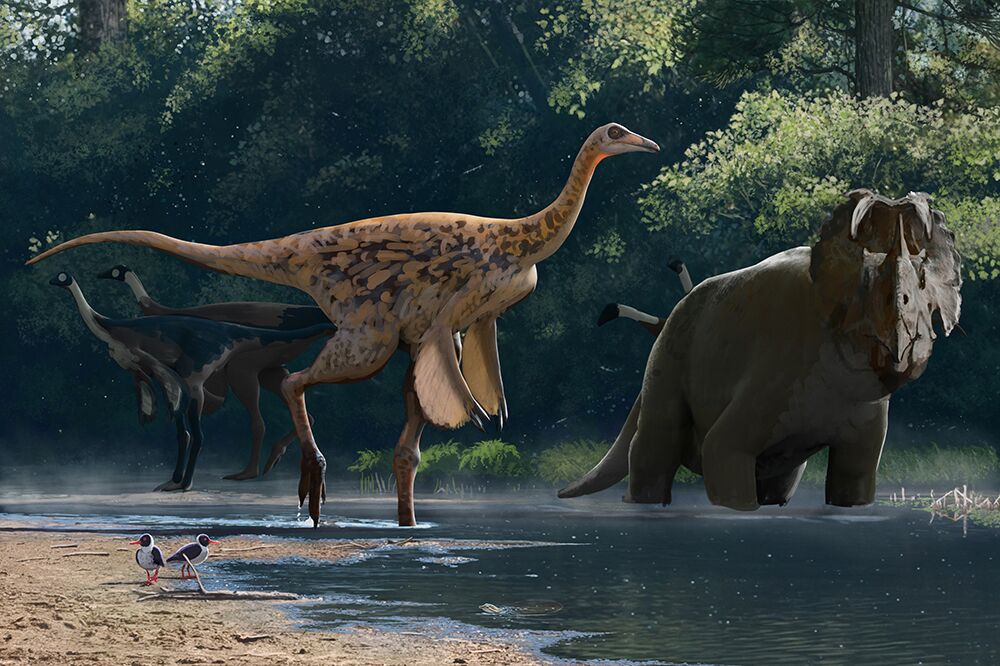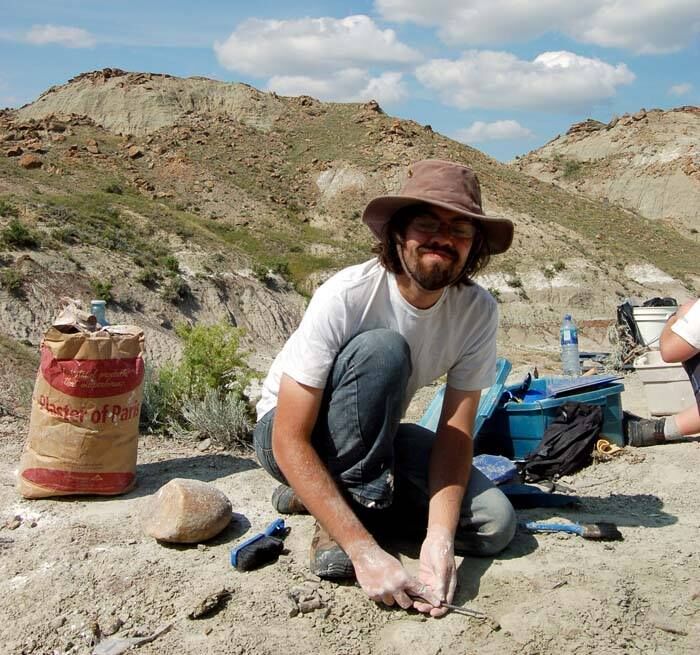An international group of researchers, led by Carleton University PhD student Bradley McFeeters, has announced the discovery of a new ostrich-mimic dinosaur, Rativates evadens, from the lower Dinosaur Park Formation of Dinosaur Provincial Park, Alberta.

The new species lived during the Late Cretaceous period. Research describing the new species has been published online in the Journal of Vertebrate Paleontology.
Based on a partial skeleton collected by the Royal Ontario Museum in 1934 from badlands adjacent to what is now Dinosaur Provincial Park, Rativates (rat-aɪ-vey-tiz) would have resembled a modern ostrich, but with long, fingered arms instead of wings, and a long tail. It would have been approximately 3.3 metres long, about 1.5 metres tall and weighed about 90 kilograms.

“Rativates was previously identified as another specimen of the more common ostrich dinosaur, but lacks the characteristics of that species,” said McFeeters, of Carleton’s Department of Earth Sciences. “We can tell that it is a new species based on features of its skull, tail, pelvis and feet.”
Rativates means “bird foreteller” and alludes to the paradox of an ostrich mimic creature that existed before ostriches. The name evadens means to evade, in reference to this swift-footed dinosaur’s ability to evade predators.
“Rativates is another exciting example of a new species of dinosaur being discovered among museum collections,” said co-author Michael Ryan, Carleton adjunct professor and curator of vertebrate paleontology at the Cleveland Museum of Natural History. “These valuable collections allow modern researchers to build on the work of earlier scientists to advance what we know about the ancient Earth and provide new insights into evolution.”
Although it is a member of the carnivorous dinosaurs, Rativates lacked teeth and, similar to birds, had beaked mouths. They are believed to have been omnivorous, meaning they ate plants, insects and other small animals. Their long, powerful legs would have made them fast runners, whether they were hunting prey or escaping from larger predators.
Although no skin impressions were found with the fossil, the closely related ornithomimid Ornithomimus, also from Alberta, is known to have had a downy covering over most of its body. It may have had true feathers as well.
“The research suggests that were at least two differently-sized, but closely-related, dinosaur species that lived together on the ancient landscape, similar to what we see today in closely related predators like foxes, coyotes and wolves,” said co-author Claudia Schröder-Adams of the Department of Earth Sciences at Carleton.
Article: McFeeters, B., M. J. Ryan, C. Schröder-Adams, and T. M. Cullen. 2016. A new ornithomimid theropod from the Dinosaur Park Formation of Alberta, Canada. Journal of Vertebrate Paleontology. DOI: 10.1080/02724634.2016.1221415.
Wednesday, September 21, 2016 in Grad Student Research, News
Share: Twitter, Facebook



